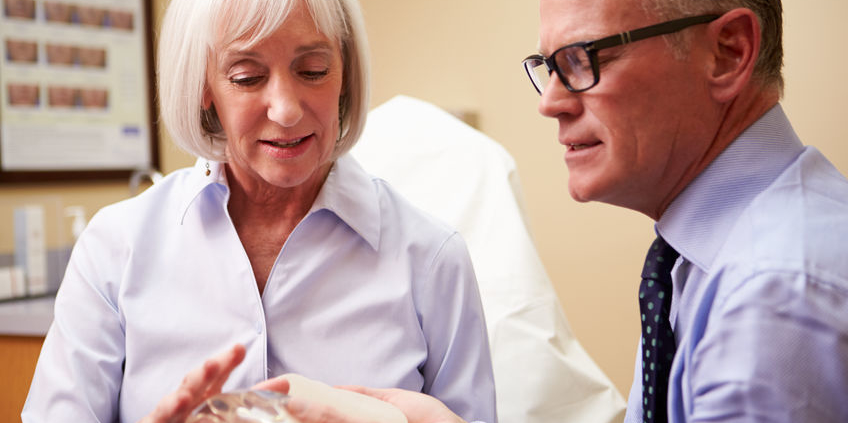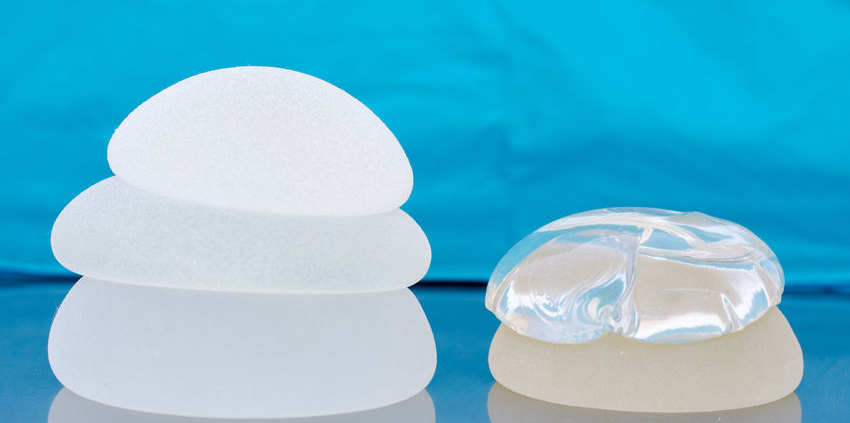24 June 2018
Two studies have recently been published which discuss patient reported outcomes and complication rates after post-mastectomy reconstruction surgery.
First a bit of background information on post-mastectomy reconstruction. The most commonly performed type of reconstruction utilizes implants. Often, a temporary tissue expander (TE) is placed by the plastic surgeon at the time of mastectomy. The TE is gradually “inflated” over time (using saline / salt water solution). When it gets to the desired size, a second operation is performed to exchange the TE for the implant. The TE and expansion process are necessary because after a mastectomy, the skin is thinned out (from removal of the breast tissue) and placement of the larger implant could compromise the blood supply to the skin and the healing process. However, a small percentage of patients are candidates for “direct to implant” reconstruction, which bypasses the TE step.
After mastectomy and implant reconstruction, patients usually spend 1-2 days in the hospital. The implants typically are placed below the pectoral (chest wall) muscle, which may result in pain and muscle spasm during the recovery period. A small percentage of patients may be candidates for “over the muscle” implant reconstruction. Implants may be filled with saline or silicone gel. Implants are foreign objects and are not meant to last forever – they may leak or may need to be replaced for other reasons. The FDA currently recommends that MRI be performed 3 years after silicone implant placement and then every other year to assess for “silent rupture” of silicone implants. However, insurance does not always cover these implant surveillance MRI scans. Potential complications of implant surgery include capsular contracture and infection which may require implant removal. Some women are bothered by the firm nature of some implants, or “rippling” which may be visible under the skin. Implants have recently been associated with a rare form of cancer – anaplastic large cell lymphoma. Routine mammogram, ultrasound or MRI are not generally recommended for breast cancer surveillance in patients who undergo mastectomy and implant reconstruction.
Autologous reconstruction (AR) utilizes the body’s own tissue. The TRAM (transverse rectus abdominus myocutaneous) flap was previously the most common type of AR. During the TRAM procedure, an incision is made in the lower portion of the abdomen (similar to a “tummy tuck” procedure) and the rectus muscle (responsible for “six-pack abs” in athletes) is removed with the overlying skin. That muscle and skin is then used to reconstruct the breast. The latissimus flap utilizes muscle and skin from the upper back. TRAM and latissimus flaps are generally performed as “pedicle” flaps – meaning their original blood supply stays intact.
With improvement in microvascular techniques, there has been an increase in the use of “free flaps” – this means that the original blood supply of the tissue for reconstruction is disconnected from its origin, and the blood vessels from the flap are sutured into blood vessels in the chest area. This has allowed the use of fat only for reconstruction, sparing the muscle. The most commonly utilized free flap is the DIEP (deep inferior epigastric perforator) flap. Other free flaps use fat from the thigh or buttock area.
AR surgeries are much longer – free flap procedures they may take up to 8-10 hours. Most patients are hospitalized for 4-5 days, including 1-2 days in the intensive care unit to monitor the blood supply to the flap. The recovery may be longer than implant reconstruction surgeries since healing needs to take place both in the chest area and in the abdomen (or thigh or buttock depending on the type of flap). The overall cosmetic result is generally more natural looking in patients undergoing AR. In patients having only one breast removed, it is much easier to “match” using AR techniques. The flap reconstruction also tends to feel much softer compared to implants (since it is the patient’s own fat) – but usually there is no sensation in the skin (or nipple if preserved) after mastectomy regardless of the type of reconstruction. The use of mammogram, ultrasound or MRI for surveillance in AR patients is controversial and practice varies considerably.
The 2 JAMA Surgery studies evaluated patient reported outcomes and complication rates after both implant and AR surgeries. The majority of patients were followed for 2 years. Overall, there were complications in 32.9% of patients – this includes everything from a minor skin infection treated with oral antibiotics to more serious complications including repeat surgery and reconstruction failure. 19.3% of patients required a repeat operation. 5.4% of patients had a failed reconstruction, where the implant or AR needed to be removed. At 2 years, patients undergoing AR had higher rates of complications including re-operations compared to patients who underwent implant reconstruction, although implant reconstruction procedures had higher rates of failure. Infections were also higher in implant reconstruction patients. In these studies, follow up only averaged 2 years – with longer follow up, patients with implant reconstruction may be found to have higher rates of complications since capsular contracture and implant leakage tend to develop over a longer period of time. Radiation during or after reconstruction, chemotherapy during or after reconstruction, and bilateral surgery were factors associated with higher complication rates in both groups of patients.
In evaluating patient reported outcomes, the authors noted that patients who underwent AR surgeries had higher rates of satisfaction with the reconstructed breast, physical well being of the chest, psychosocial well being, and sexual well being compared with those who underwent implant reconstruction. The AR patients did report lower measures of abdominal physical well being compared to implant reconstruction patients. Follow up in this study was also about 2 years for the majority of patients – only 21% of patients returned the survey at 3 years and 10.2% of participants returned the survey at 4 years. It is unclear if the implant reconstruction patients might report higher satisfaction levels if surveyed at a later point in time. The authors noted that due to the smaller number of patients who completed surveys at 3 and 4 years, conclusions in these groups of patients could be influenced by selection bias. Essentially that means that the small group may not be representative of the whole study population – for example, patients who are doing well might not be motivated to complete a lengthy survey compared to a patient who is having problems.
These findings should stress to patients that reconstruction is a “process not a procedure” – these are major operations with the potential for short and long term complications. I think that these 2 studies will contribute to how we discuss surgical options and potential complications with our patients, but the results may not make the decision-making process easier for patients. Patients trying to make a decision about surgery have already been told they have cancer – that alone is enough to shake even the strongest of clear thinkers. I have not figured out how to ensure that a patient is making a truly informed decision in this situation except through repeated discussion and questioning. As physicians we have made progress in helping our patients make decisions based on education and not fear. But is a truly informed decision even possible when the overriding reason for the decision is a potentially life threatening condition? I’m not so sure.
New York Times – One in Three Women Undergoing Breast Reconstruction Have Complications



